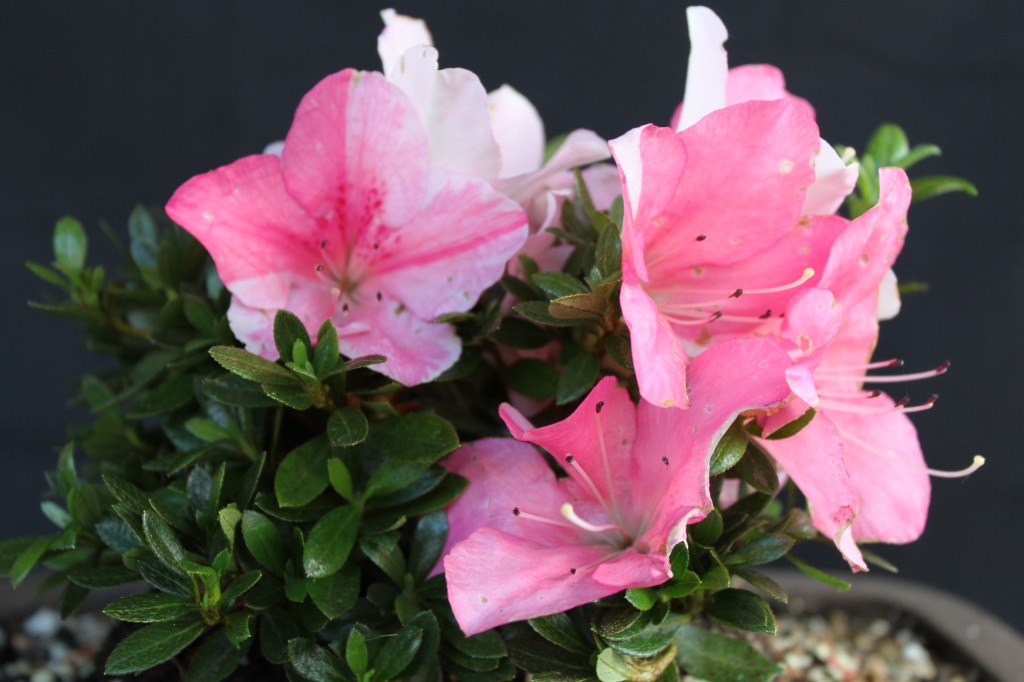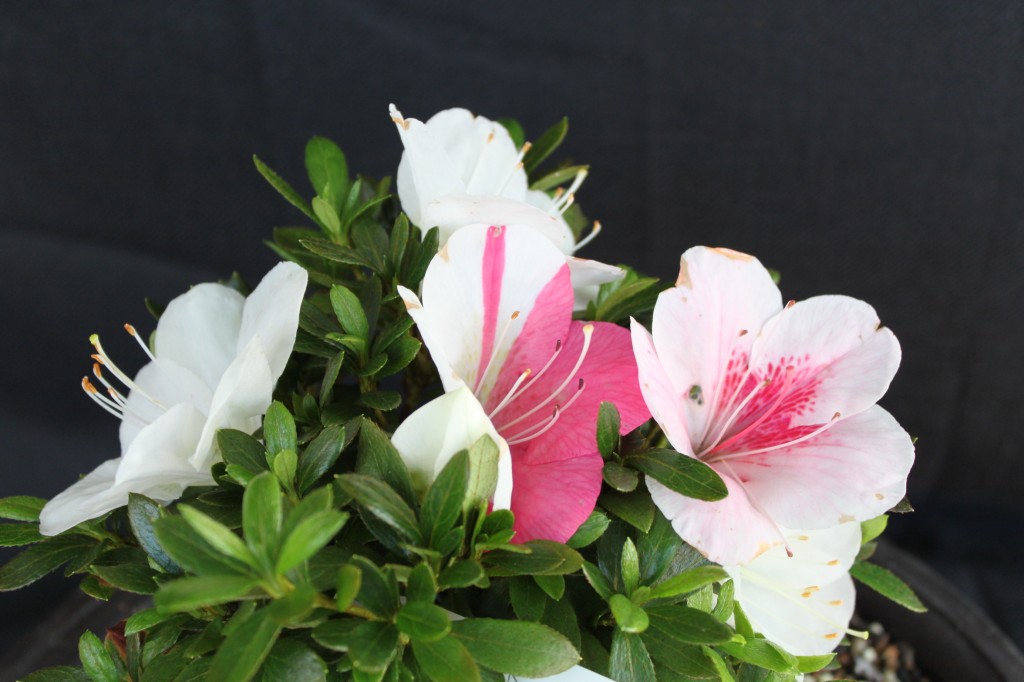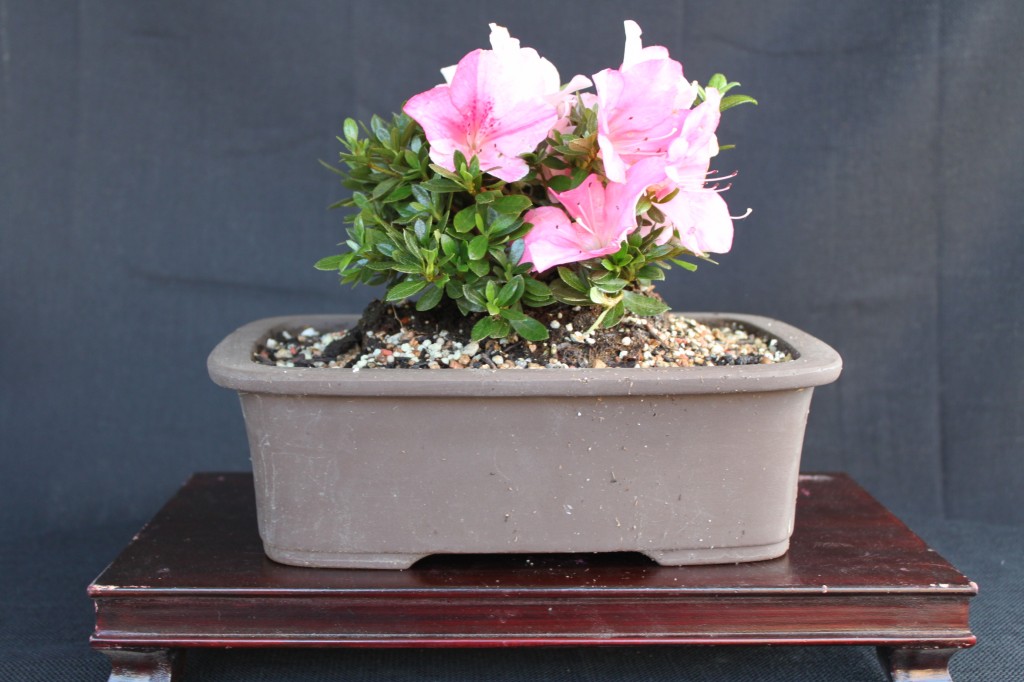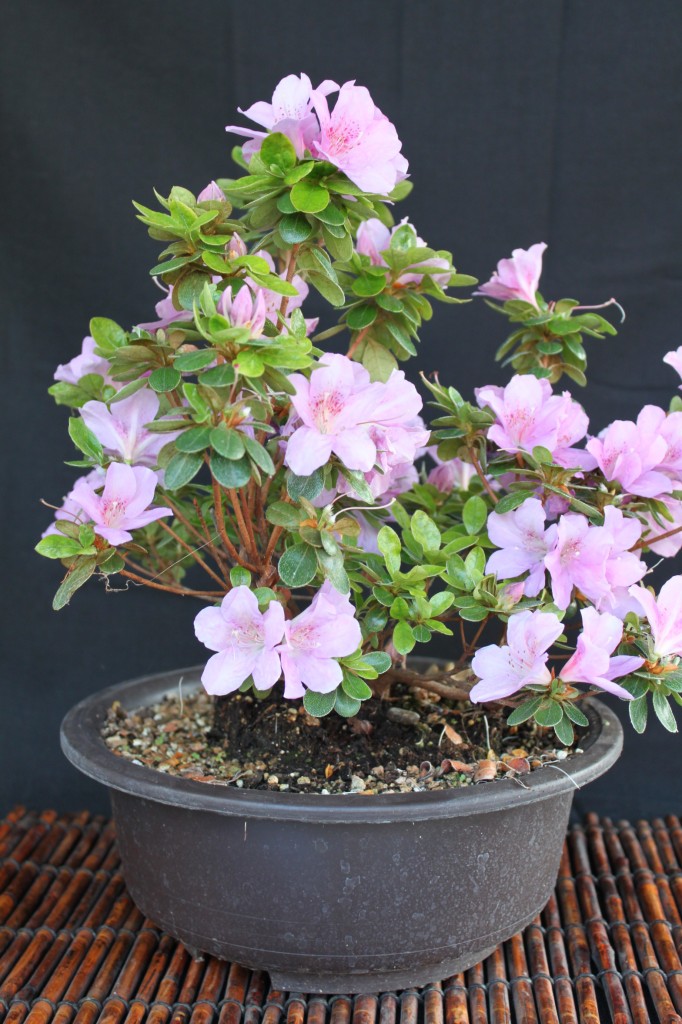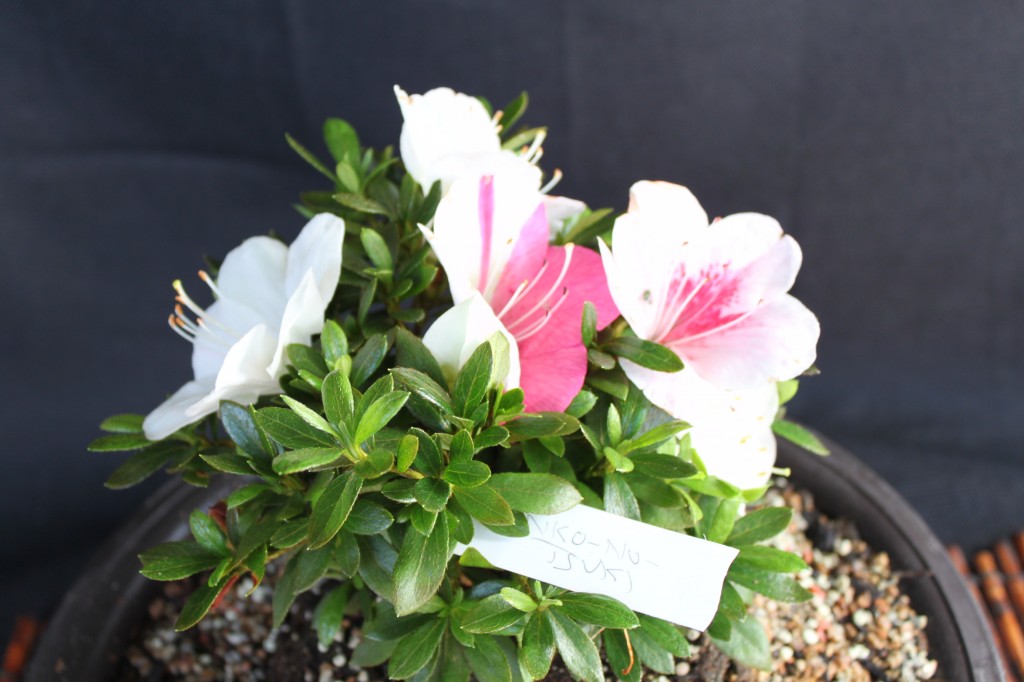Satsuki Azalea Bonsai
Satsuki Azalea Bonsai Care and Creation
There are several different species of Azalea and Rhododendron which can be used for azalea bonsai, but of all of them, the Satsuki Azalea from Japan is the most popular. The Japanese have been cultivating Satsuki Azalea bonsai for centuries. For bonsai, the Satsuki Azalea has a lot to recommend it. It is capable of forming a thick trunk, with a lot of character. It has very small leaves. Most important, every May or June, a Satsuki Azalea will bloom and put on an amazing display of color.
The Japanese have been breeding Satsuki Azaleas for bonsai for hundreds of years, and have developed nearly one hundred specific varieties, all of which are classified by the color and shape of the flowers. As bonsai, Satsuki Azaleas have the unique capability of producing different colored flowers on the same tree, and of producing flowers with more than one color on the same bloom, such as the pink and white specimen shown in the accompanying photographs.
Some Japanese bonsai enthusiasts will collect and work only with Satsuki Azalea bonsai, and there are entire bonsai shows in Japan devoted exclusively to Satsuki Azalea bonsai.
Where to Get One
You will not find a Satsuki Azalea down at your local “big box” home improvement store. While you might find its larger cousin, the American Rhododendron or American Azalea, the Satsuki is too slow growing to be practical as a landscape plant, so only a bonsai nursery or a specialist Azalea nursery will carry a selection of Satsuki Azaleas. If there is not one near you, they can be ordered online and shipped in the winter months.
What to Do When It Arrives
Unless you purchased an Azalea that has been thickened on a bonsai farm, you will want it to grow some before you put it into a bonsai pot. The pros use a ceramic training pot that looks like a bulb pot, but you know what? A cheap bulb pot will work just fine. So evict the tulips from the nearest bulb pot and put your Satsuki in it. You’ll get a longer lasting floral display that way. Or, if you are a long time enthusiast and you have a few spare bonsai pots lying around, and one is the right size and shape to be a good training pot for a Satsuki Azalea bonsai, (or prebonsai), then you can just use that like I did here.
Soil
The Japanese use a type of clay pellet called Kanuma. Most good bonsai suppliers around the world will have some, but since it is coming from Japan, it is expensive. Clay pellets are clay pellets, so automotive spill absorbent or cat litter should work, but if it is your first time for those materials, you might want to experiment with a less valuable plant first. I prefer to use decomposed granite for my aggregate. The decomposed granite available in the Western U.S. has a little bit of an orange tint to it, because there is a little iron ore in the rock, and this will give the Azalea iron as a nutrient, and possible other trace elements as well. I tend to compose my soil of about 40% organic matter so that the little Azalea does not run out of nutrients (making those beautiful flowers takes a lot of energy) and for water retention. In my part of California, last September, we had a day where the temperature reached 113 degrees Fahrenheit. My Azaleas survived.
Siting:
Mine live outdoors on a porch that is open to the north and east. They get a little sun in the early morning, and shade the rest of the day, and they seem to like it. The porch also shelters them from the wind, which can be a real problem here in the fall.
Pests and Problems:
Insects are not much of a problem with Azaleas. Fungus can be more of a problem because they live in the shade, and like a fair amount of moisture in the air. Make sure your soil drains well, and this should eliminate most fungus problems. Root rot can also be a real problem, which is why if you use an organic component in your soil, it should not be greater than 40%.
Pruning and Shaping:
Azaleas tend toward basal dominance rather than apical dominance. This means instead of pushing the growth to the top of the tree, they love to throw off suckers from the base. If you want to build a thick trunk with sacrifice branches, this is wonderful, but if you do not keep the lower growth in check, you risk the apex of your tree getting thin and dying back. Satsuki Azaleas like to bloom in June, except for mine, which has a mind of its own – either that or these plants are sensitive to the rainy season. In Japan it rains a lot in June, which may trigger flowering. Here we had rain in November and December, so my little Satsuki decided to put on an early flower show.
If your Satsuki Azalea does flower in June, then you will be doing your repotting and pruning before the tree flowers.
Final Comment:
I purchased the little Satsuki Azalea bonsai/prebonsai shown in the photos about a year ago at our club show in June, along with another one that has not bloomed yet, but is starting to bud. Since I have had a lot of failures with Azaleas in the past (they require a lot more care than a juniper bonsai, that is for sure) I have had a lot of fun researching and setting up the right growing conditions for this little Azalea bonsai.

